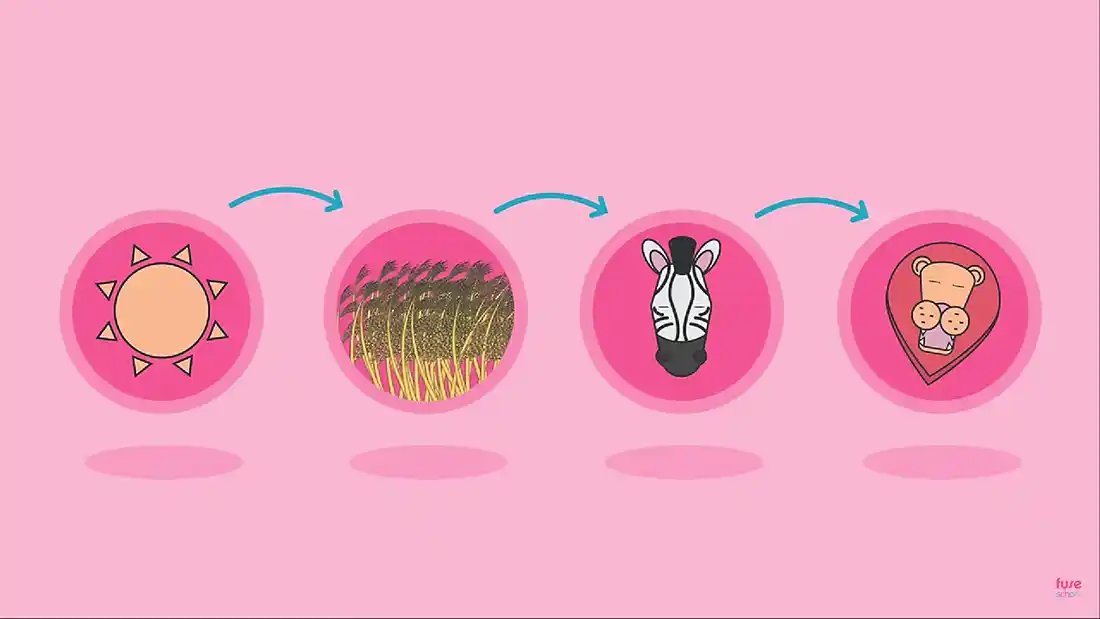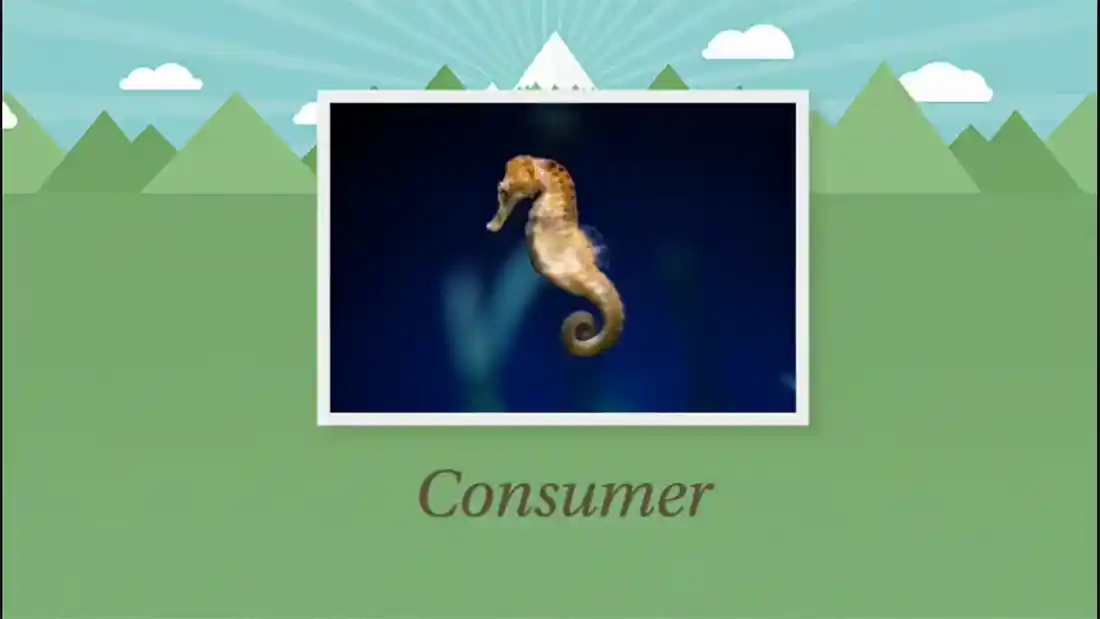

Food chain, food web, producer, consumer, decomposer, secondary, tertiary, trophic level, apex predator, interdependence, organisms, topographical.
A food chain is a selection of organisms that prey and predate on each other. This is a topographical natural phenomenon.
So, we have levels of organisation in a habitat. Through each one, there are predators and prey, until you reach the top level. This top level is called the Apex Predator. This level system is called trophic levels.

A food chain can have multiple prey and predators in it, but will then be classed as a food web, with interlinking animals and species. In the natural world there are many food webs, and multiple food chains within those webs.
So, as humans, we like to organise things. The way a habitat or ecosystem works, we really need to do this, just so we can gain a better understanding of how things work. To do this, we have come up with the trophic level system. This system shows us who preys on the lower levels, and who the predators are to the lower levels.
Sounds difficult, doesn't it? I'm sure I have a picture on the right that will show you a trophic level system. They are also known as energy pyramids.
The following still is from a video on food chains, with the following details:
Please click on the image to view the video.

If you watched the video, you'll have seen that all components in a food chain begin with the sun. Let's take a look at the other components.
Producers are the most abundant component of a food chain. They are the plants and trees that grow using the sunlight in the process for photosynthesis. Without these in the world, there would be no trophic levels, because there would be no life on Earth as we know it.
A consumer is an animal that will consume the lower level, whether that be a producer, or another animal in the food chain. A primary consumer is the first component in the line to eat something. This is usually a herbivore. There can be many different levels of consumer - primary, secondary, tertiary, and so on.
A decomposer is an organism that eats away at the matter that is left when another organism dies. They usually reside close to the ground (or under it), and break down the dead matter. Any nutrients they find along the way, they return to the Earth for plants to use, and this is part of the Carbon cycle.
The following still is from a video on producers, consumers and decomposers, with the following details:
Please click on the image to view the video.

There are different types of feeders, which are organisms that feed in different ways. Below explains what they are called and what this means.
These are organisms that are self-feeding. Usually classed as a producer, organisms such as plants and grasses that don't need anything else to feed themselves (aside from the sunlight, perhaps), create their own food. They are there ready for...
Heterotrophic feeders are organisms that do rely on other organisms to feed. Usually classed as a consumer. An example of these types of organism include small mammals such as mice and rats, to bigger mammals such as cows and sheep.
A saprotrophic feeder is an organism that feeds on non-living materials. So, when something dies, these decomposers will feed on the organic matter left behind. Worms, fungi, and small decomposing critters are all classed on this.
An apex predator is a predator that has no other predator above them. They are animals like a Golden Eagle, or a lion. There is no natural predator of these animals in the animal kingdom (humans have been known to be their predator, usually for profit of some sort). This can be three, four or five items up in the food chain, but they are the top of the food chain.
When one or more food chains overlap, they then become a food web. This is simply to show that there are multiple predators for each prey. They all link up and interlink as well.
So, you have a selection of food chains that link together to form a food web. Great. But it all becomes a bit messy. Let's look a little closer. Your simple food chains are great, but linked together and formed into the food web, means that there are constant crossovers of food chains.
This is called interdependence. It means that one prey may have several predators - a mouse may have a fox, or a badger, or a cat as their predators. They each rely on these different prey in order to survive and procreate as a species. It works in similar fashion to us as humans. We rely on different foods in order to maintain our body as a healthy temple. Yes, you do... Admit it!
Activities that can be used in the classroom.


If you are unable to see the board, please click here.
Disclaimer | About Me | Sitemap
Website design by SyntaxHTML.



Blue icons adapted from icons courtesy of Smashicons.com